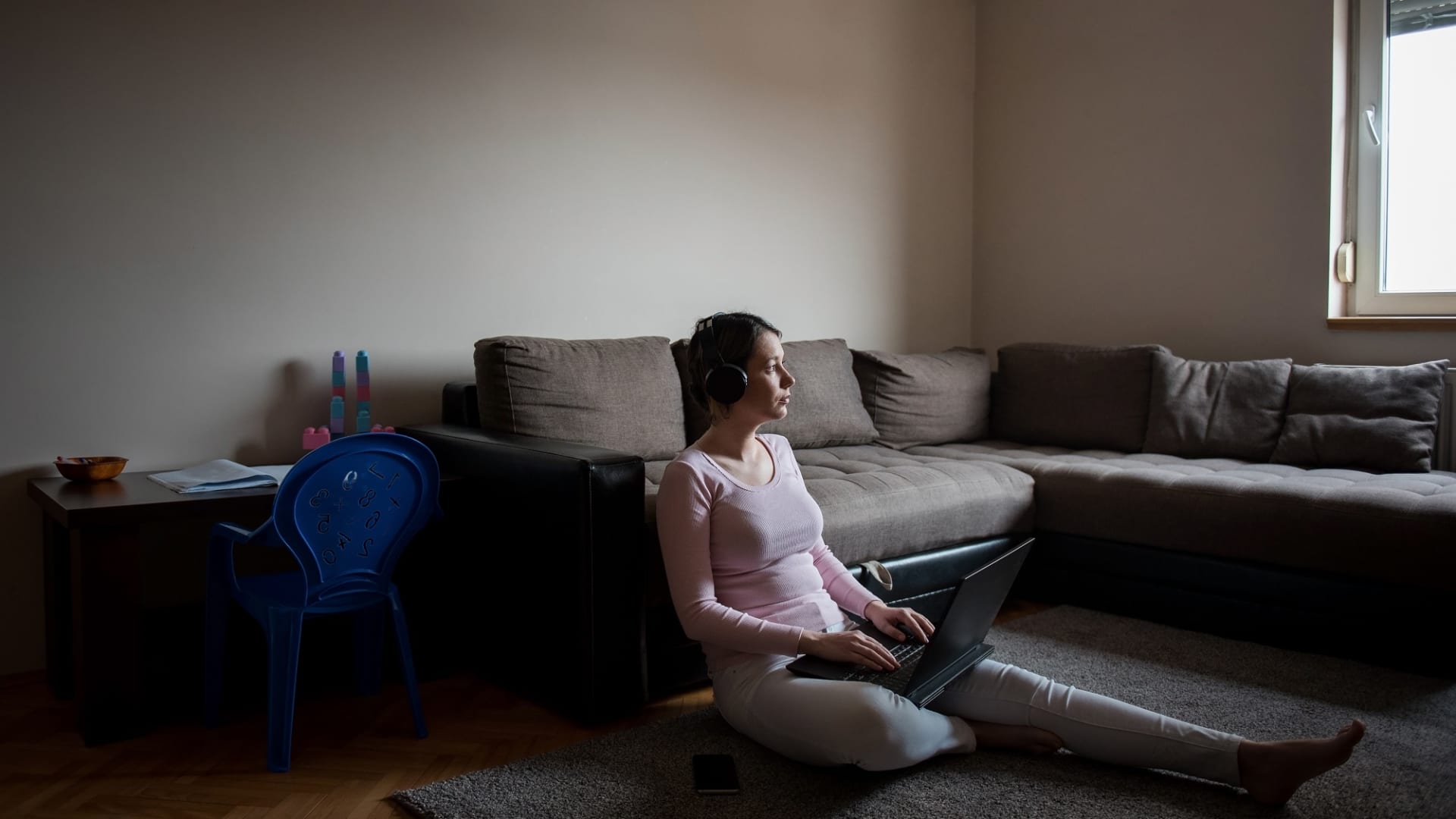
For the first time in eight months, the economy saw a dip in job growth with 140,000 jobs lost in December. All of these jobs, according to an analysis from the National Women's Law Center, belonged to women, emphasizing the disastrous impact the coronavirus pandemic is continuing to have on women in the workforce.
In December, women lost a total of 156,000 jobs, while men gained 16,000 jobs, according to NWLC. Of the net 9.8 million jobs lost since February, women have accounted for 55% of them.
December's jobs report shows a stark difference from where women were just a year ago when, for the first time since 2010, women slightly outnumbered men in the U.S. workforce. Now, according to December's jobs report, women age 20 and over have an overall unemployment rate of 6.3%, which is nearly twice as high as it was around this time last year. Overall men, ages 20 and over, had an unemployment rate of 6.4% in December, with Black men's high unemployment rate of 10.4% contributing to this number.

"We expected that when there was a resurgence of the virus that we would see women losing the jobs they had gained over the last few months," says Emily Martin, NWLC's vice president for education and workplace justice. But, she says, she was still "shocked" to see that "women lost more than 100% of the jobs" in December.
In the leisure and hospitality sector, 498,000 jobs were lost in December, with women accounting for 56.6% of these losses, despite making up 53.1% of the industry's workforce, according to NWLC. In the government sector, 45,000 jobs were lost last month, with women accounting for 91.1% of these losses, despite making up 57.5% of the government's workforce. And while the retail trade sector added 120,500 jobs in December, women accounted for just 44% of those gains, despite making up 48.5% of the industry's workforce.
When broken down by race, Latina and Black women experienced unemployment levels that were higher than women's overall unemployment rate of 6.3%. Last month, 9.1% of Latinas and 8.4% of Black women were unemployed, compared to 5.7% of White women and 5.8% of White men.
Money Report
"It's devastating," Martin says in regards to the pandemic's impact on working women, "and I'm concerned that it may have devastating effects for months and years to come."
In addition to women accounting for all of the jobs lost last month, Martin adds that "one of the many disturbing numbers" she saw in NWLC's analysis is that nearly 40% of women age 20 and over had been out of work for six months or more in December. For Asian women age 16 and over, this number stood at 44% and for Black women and Latinas this number stood at 40.8% and 38.3%, respectively.
"We know that those long-term spells of unemployment make it hard to find another job and it also means that when you do find another job, your wages are likely to be lower," says Martin. "So the fact that women are getting hit so hard in this recession really threatens to widen the gender wage gap going forward."
Right now, women working full-time in the U.S. are paid just $0.82 for every dollar paid to men, with this gap being even wider for women of color, reports NWLC.
Martin points out that aside from the alarming unemployment numbers we saw in December, last month's jobs report does not account for the millions of women who have been forced to leave the workforce due to ongoing closures of schools and day-care centers. In September alone, more than 860,000 women dropped out of the labor force, according to NWLC. And last fall, one in four women said they were considering downshifting their careers or leaving the workforce due to the pandemic's impact, with mothers three times as likely as fathers to be responsible for the majority of housework and childcare during Covid-19, according to Lean In and McKinsey & Company's "Women in the Workplace" report.
To ensure that women are able to regain their footing in the workplace, Martin says a more robust Covid-19 relief package is needed that includes funding for state and local governments, as that's one sector in which women are overrepresented, as well as funding for paid family leave and paid sick leave beyond this crisis. Additionally, she says if we want to see more working mothers stay in the workforce or re-enter the workforce then there needs to be a bailout for the child care sector.
"The last Covid relief package had about $10 billion for child care," she says. "And it sounds like a big number until you realize that more than $50 billion is needed to ensure that our child-care infrastructure is still there once people are able to go back to work."
Don't miss: The best credit cards for building credit of 2021
Check out:
More than 860,000 women dropped out of the labor force in September, according to new report
Ambition is not the problem: Women want the top jobs—they just don’t get them






